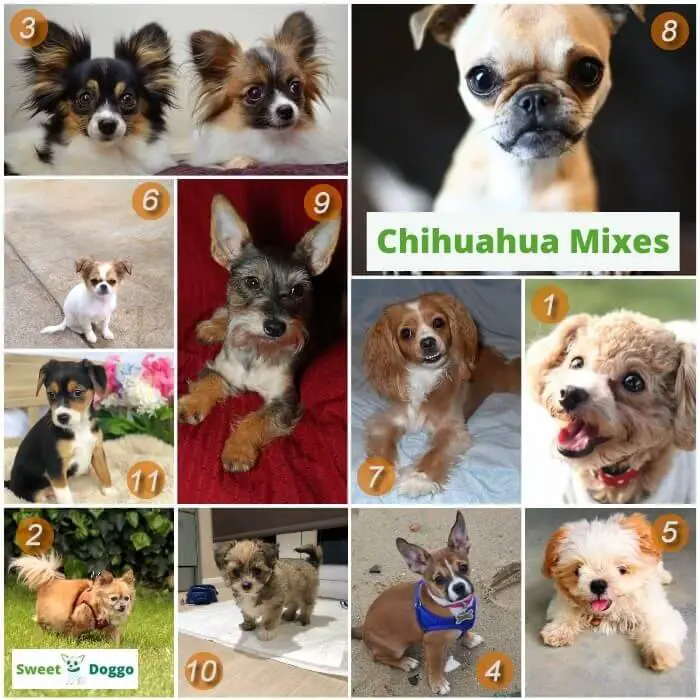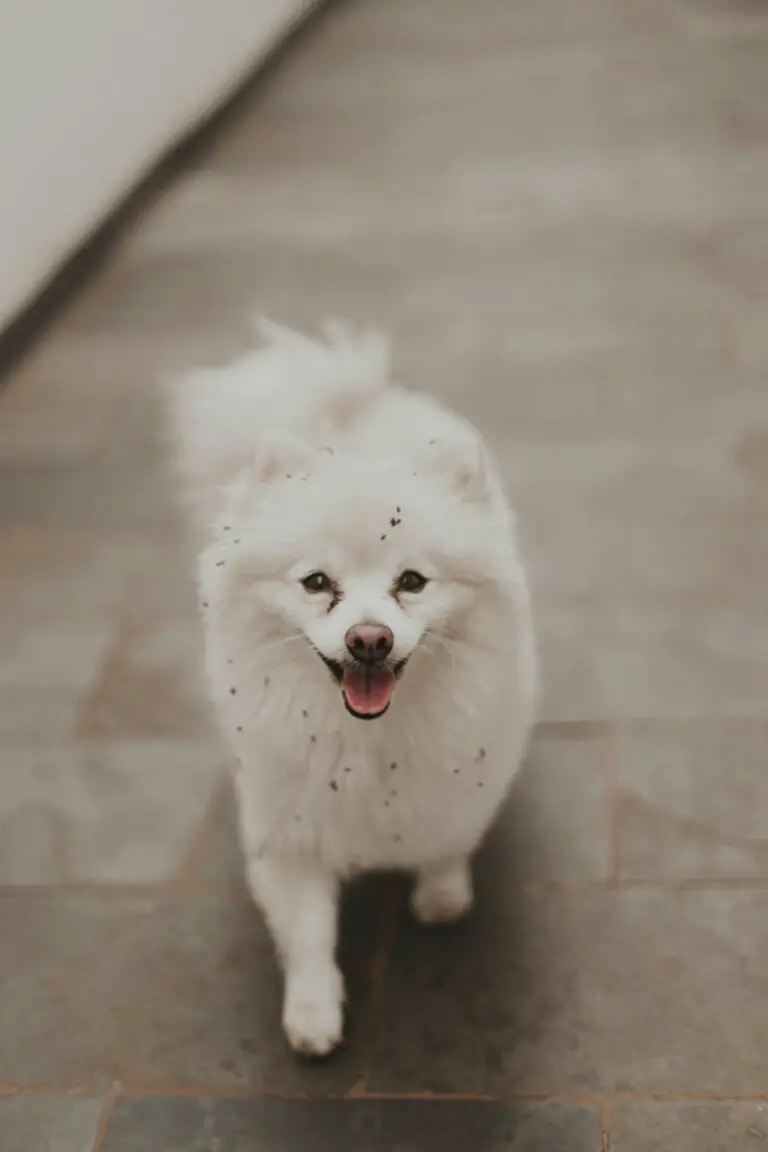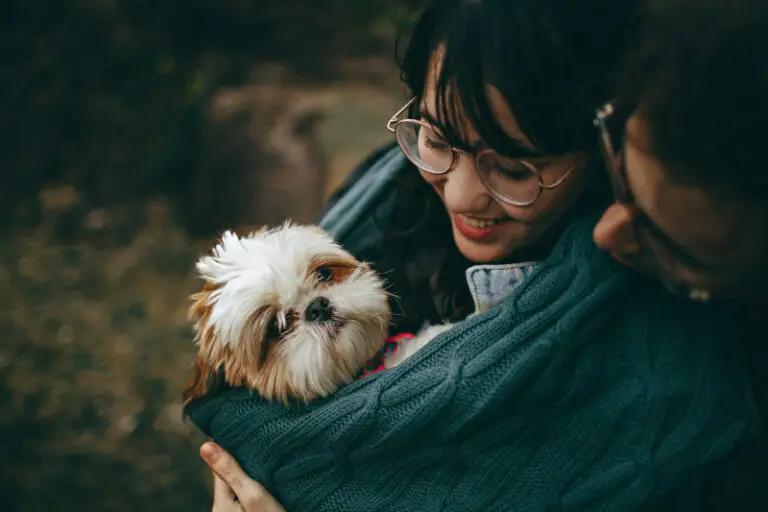Since this is a unique breed, many admirers mistakenly believe that all Chihuahuas are the same. But that’s not entirely true. Did you know that there are different types of chihuahuas? With some official and some unrecognized variations, the popular Mexican dog does not always exhibit the same characteristics.
Keep reading below and find out how many types of chihuahua are there in total, how they differ, how to know what type of chihuahua you have, how to identify if a chihuahua is pure… and much more.
Table of Contents
How many types of Chihuahuas are there? Which are?
First of all, it is important to point out that there is only one Chihuahua breed of dog, within which only 2 official variations are recognized: the short- or smooth-haired Chihuahua, and the long-haired Chihuahua.
These are the types of Chihuahua recognized by the International Cynological Federation (FCI), the American Kennel Club (AKC), and other important clubs around the world.
However, the variety within this breed is much wider. The differences in terms of coat length, dog size, and head shape have led to today talking about 6 types of chihuahua dogs in total:
- With short hair
- Long-haired
- Hairless
- Apple head
- Deer head
- Miniature or cup of tea
Unofficially, the term ” types of Chihuahuas ” refers to variations in size, head shape, and coat length. Some of these physical characteristics do not comply with what is established by the breed standard.
Let’s see what distinguishes each of them and how they differ…
1. Short-haired chihuahua
This is the dog that comes to mind when talking about chihuahuas. The short, compact, and low-shedding coat are one of the most valued characteristics among people looking for a small dog with a low maintenance level.
His coat does not need trimming or regular brushing. Bathing and occasional brushing (at least once a month) are more than enough to keep him clean and healthy.
Still, it’s important to note that this type of Chihuahua sheds more than the long-coated variety, which is why it’s not recommended as a pet for allergy sufferers.
Short-haired Chihuahuas can be deer-headed or apple-headed; however, they are usually linked more to the blocky structure. These specimens exhibit a wide variety of colors and markings.
Some short-coated Chihuahuas can feel smooth to the touch, while others can feel significantly rough.
See later: The 11 Smallest Dog Breeds in the World [+Photos and Description]
2. Long-haired chihuahua
As its name suggests, the long-haired Chihuahua is distinguished by the length of its coat. This type of Chihuahua has a thick, but soft and smooth coat, very similar to velvet. It is said that it can take up to 3 years, or more, to fully grow.
Unlike his brother with short hair, the one with long hair does require a certain regularity in its maintenance. Experts recommend brushing several times a week, trimming occasionally, and bathing as needed. On the plus side, its shedding level is lower.
Long-haired Chihuahuas can also be apple-headed or deer-headed.
Considering that both varieties look the same at birth, it is difficult to know if a Chihuahua puppy is going to be long-haired. Finding out can take several years.
Note. Short-haired and long-haired Chihuahuas are the only variations officially recognized by the breed standard. A Chihuahua can have both a short coat and a long coat; in any case, it will continue to be considered purebred.
3. Hairless chihuahua
Although popularly known as a type of Chihuahua, it should be noted that this is not an actual type, much less a separate breed. Hairless Chihuahuas are usually the result of a genetic defect caused by over-breeding for Chihuahuas of a specific color.
In other words, it’s not exactly a natural type of chihuahua.
But that has not prevented these specimens from enjoying certain popularity among admirers of the Chihuahua and people who want to have a hairless dog. That is the reason why some breeders have taken to breeding Chihuahuas without a coat.
Later: Do You Know These 10 Hairless Dogs? Images + Traits and Temperament
4. Apple Head Chihuahua
Named for the apple-like structure of its head, this is arguably the quintessential type of Chihuahua. Having an apple head is one of the main requirements to be classified as a Chihuahua before breeders, clubs, and exhibition groups.
How to distinguish an apple-shaped head? Typically, the dog exhibits a well-rounded head, with the top of the skull notably broad, spherical, and somewhat sunken (apple-like). The large head often looks disproportionate compared to the short appearance of its neck, legs, and body.
Applehead Chihuahuas have a unique feature, known as a noddle or fontanel. This is very similar to the slightly submerged soft spot that we also see on babies’ heads.
The snout is very short, small, and is at a 90-degree angle to the face. The bulging eyes appear to bulge out of their sockets and are often closer together than in other Chihuahuas.
Due to the size of the head, these specimens are prone to hydrocephalus. As a prospective owner, you’ll want to check if the condition runs in the dog’s family before getting an apple-headed Chihuahua.
By FCI and AKC standards, only short-haired or long-haired, apple-headed Chihuahuas are technically true Chihuahuas.
5. Deer Head Chihuahua
The “deer head” is a different-looking type of Chihuahua, also popular with admirers of the breed, but less so with breeders, clubs, and show organizers.
Deer-headed Chihuahuas are characterized by the unique appearance of their face, which resembles the face of a young fawn. The head is noticeably finer and more elongated than that of an “apple head” specimen.
The snout is longer and narrower, the eyes are further apart, and the skull appears flatter. In addition, these dogs have long legs and bodies. Such physical characteristics are not accepted to participate in dog shows.
According to breed standards, the Staghead does not meet the parameters of a true Chihuahua.
An advantage associated with this variety of Chihuahua is its strength and low incidence of disease. In general, it is considered a healthier pet for the family.
Note. Many people mistakenly believe that the term deer head refers to the snout. It is common to hear: “if it has a long snout, then it is a deer-headed Chihuahua”… But in reality, it is not always like that. Although these specimens usually have a longer snout, the main feature to take into account is the shape of the upper skull.
6. Miniature or Teacup Chihuahua
The last type of chihuahua is the mini or teacup. Most people use both terms interchangeably. This is a very small Chihuahua, measuring less than 9 inches (23 cm) and weighing 5 pounds or less as an adult.
This is a very important detail. A chihuahua can only be considered a cup of tea if it reaches the above measurements during its adult stage. This means that if a specimen exceeds these weight and height values, it can no longer be called a “miniature”.
Some unethical breeders have been known to sell undeveloped puppies as a type of mini chihuahua.
Consider that, due to their tiny size, they can suffer from different health problems, especially in the joints and bones. Likewise, it is noted that they are very fragile and prone to end up hurt.
The Miniature Chihuahua exhibits the same temperament as any other breed of traditional Chihuahua.
Types of chihuahua mixes
The breeding of pure Chihuahuas with dogs of other breeds has given rise to new mixed or hybrid Chihuahua breeds. It is said that there are approximately 20 mixtures. Some of the most popular are:
- Chi-poo (chihuahua and toy poodle breeds )
- Pomchi (Pomeranian and Chihuahua breeds)
- Chion (Chihuahua and Papillon breeds)
- Boxachi (boxer and chihuahua breeds)
- Bolo-chi (Bolognese and Chihuahua breeds)
- Chin-wa (Japanese Spaniel and Chihuahua breeds)
- Chi-spaniel (Chihuahua and Cocker Spaniel breeds)
- Chug (Chihuahua and Pug breeds)
- Chizer (Chihuahua and Miniature Schnauzer breeds )
- Chi Chon (Chihuahua and Bichon Frize breeds )
- Cheagle (Chihuahua and Beagle breeds)
Note. The numbers in the image correspond to the number of the breed in the list above.

Other types of mixed Chihuahuas include the Chipin, Chi Apso, Labrahuahua, Scotchi, and Silkyhuahua.
The different chihuahuas and their colors
The Chihuahua breed has one of the largest varieties in terms of colors and markings within the canine world. If we were to place a long-haired white chihuahua next to a short-haired tricolor chihuahua, it would come as no surprise that many would think that they are two different dogs. But actually, they are not.
From solid color, bicolor and tricolor specimens, to spotted and brindle, they are all true Chihuahuas.
To know more details keep reading in: The 30+ Colors of the Chihuahua Breed – Types and Patterns of Spots
Quick Answers to Frequently Asked Questions
How to differentiate a deer head chihuahua from an apple head?
Although both types or varieties are very similar, there are several differences that help distinguish them.
- Apple Head Chihuahua Characteristics
- Head visibly disproportionate compared to the rest of the body
- Top of skull rounded, apple-shaped
- Soft cleft (noddle) at the top of the head
- Protruding forehead, rising just above the snout
- Short snout, forming an angle of 90 degrees with respect to the face
- Noticeably narrow and prominent jaw
- Bulging eyes, not far apart
- Cropped legs and body longer than tall
- Average weight under 6 pounds
- Characteristics of the deer-headed chihuahua
- Small, elongated head, similar in appearance to a deer
- Long, angular face
- Slightly flatter and narrower skull (unlikely to have a noddle)
- Longer, narrower, and more pointed snout, which forms a slope at the junction with the skull
- Extended jawline
- Longer neck
- Legs and body structure are generally taller and slimmer
- Weight up to 12 pounds
Many of these features are not visible while the dog is a puppy. That is why it is said that the best way to know what a Chihuahua is going to be like is to look at its parents.
How to tell what kind of chihuahua I have?
Given the physical diversity that the Chihuahua breed exhibits, it is normal for many owners to wonder what type of Chihuahua I have. The quickest way to tell is to pay attention to the appearance and some specific traits of the dog.
Step 1
Identify your chihuahua’s coat. This is the most obvious classification, as you can see with the naked eye whether the dog has rough short hair or long smooth hair. Deciphering the type of coat is often difficult if it is a puppy. It is generally not known if a Chihuahua is going to have long hair until it becomes an adult.
Step 2
Examine the dog’s head to see what shape it is. If the Chihuahua has a conspicuously large, round, broad head with a dome shape and a small noddle on top, then it is likely an “apple head.”
If, on the other hand, his head is small, narrow, elongated, and slightly flat on the surface, your Chihuahua is a deer head. It is easy to recognize due to the great similarity of the dog with a small deer.
Step 3
Identify the color of the layer. Counting the different colors, patterns, and markings, Chihuahuas can be nearly 30 different colors. Some are obvious like white, black, fawn, and tricolor. But there are other combinations and shades that often cause confusion.
Based on these basic steps you can conclude that you have, for example, a “deer head long-haired tricolor chihuahua” or a “brown-headed short-haired chocolate-tan chihuahua”.
How do I know if my chihuahua is purebred?
To know if a chihuahua dog is pure or original, it is not enough to analyze its appearance.
While it is important to inspect traits such as height, weight, head shape, ears, facial features, tail structure, and legs, the only way to be sure a Chihuahua is purebred is by registering your pedigree.
A reputable registered breeder will be able to provide you with information about the puppy’s purity, its parents, and other ancestors in its family tree. If not, there is no guarantee that the dog is a pure Chihuahua.
Another alternative is to take a DNA test but be warned that this is often expensive.



